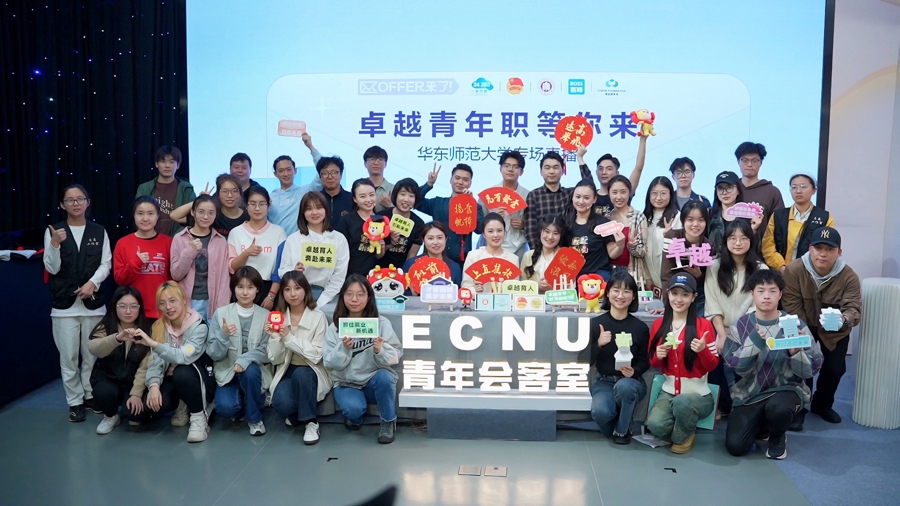Keep’s huge losses hit the market, and more players struggled. Is Internet fitness a good business?

Wen | Value Institute
On February 25th, Beijing time, Keep, which had been rumored by IPO for many times before, finally formally submitted a prospectus to the Hong Kong Stock Exchange, sprinting for the "first share of Internet fitness".
Keep, which was founded in 2014, is still very young, but in many dimensions, it has indeed reached the stage where listing must be considered.
According to Tianyancha data, Keep has completed eight rounds of financing since its establishment. The latest round of financing was completed in January last year with a $360 million round of financing, which was led by Softbank Vision Fund. In the list of shareholders in previous rounds of financing, there are many top institutions such as Gaoyou Capital, Tencent, Times Capital, GGV ggv capital, Wuyuan Capital and Goldman Sachs.
After eight rounds of financing and a long period of commercialization exploration, Keep should give shareholders a good explanation, and IPO is an inevitable choice.
However, according to the data disclosed in the prospectus, the losses for many years, the high marketing cost and the unopened commercialization path have all laid hidden dangers for its IPO prospects.
More importantly, behind the bloody listing of Keep, the heat of the entire Internet fitness track has dropped and the mid-waist platform has struggled to survive, which makes us worry about the future of this "expired outlet".
Judging from the exposed prospectus, the advantages and disadvantages of Keep are obvious.
According to the value institute,The advantages of Keep are mainly reflected in two aspects: first, the user scale and market share are significantly ahead of competitors, and second, the diversified revenue structure, but the disadvantage is that the losses are still increasing.
- Advantage 1: the monthly living scale and market share are leading.
The data shows that Keep, whether it is MAU, cumulative users or subscription members, dominates the vertical field of Internet fitness, and the above indicators are still growing.
According to the prospectus, the average number of monthly users of Keep in the first three quarters of 2021 was as high as 41.75 million, which was significantly better than the 29.7 million and 34.4 million in 2019 and 2020, but it dropped slightly in the fourth quarter, and the monthly users in that quarter were only 28.94 million.
From the growth curve, there was an outbreak from the end of 2019 to the first half of 2020, which was closely related to the spread of the epidemic. According to the report of Bida Data, the number of users of many Internet sports and fitness apps has increased during the epidemic. In 2020, the number of cloud fitness users reached 261 million, which also set a record in recent years. In the second quarter of 2020, the most brilliant year of Keep, the number of monthly users surged by 10 million year-on-year, an increase of 48%.
From the MAU change curve after the outbreak in 2020, the Keep user retention rate is not bad. In the first three quarters of 2021, MAU kept growing month-on-month and year-on-year, and the monthly living scale in the fourth quarter was more than 3 million higher than that in the same period of 2020.
Behind the high growth rate, Keep’s membership conversion rate has also maintained a good growth momentum. The data shows that the average number of monthly subscription members increased from 375,000 in the first quarter of 2019 to 3.193 million in the fourth quarter of last year, and the membership penetration rate increased from 6.4% in 2020 to 9.5% in the fourth quarter of last year.
According to the statistics of third-party organizations, the cumulative number of Keep users has exceeded 300 million, which is hard to compete in the Internet sports and fitness platform. From the perspective of occupancy rate, according to the survey of burning knowledge consulting, 70.1% of the fitness people in China know the Keep mobile application, and the net recommendation value of Keep in domestic fitness apps is also the highest.
It can be said that at this stage, users are the most precious wealth of Keep.
- Advantage 2: The revenue structure is increasingly rich.
Secondly, Keep has also built three business segments, namely, own-brand products, subscribed members and online paid content, advertisements and other services, which enriched its revenue structure.
Judging from the information disclosed in the prospectus, the revenue of private brand products accounts for the highest proportion, and the growth rate is also the highest among the three business segments. The data shows that the revenue of Keep private brand products in 2019 and 2020 was 396 million and 636 million respectively, up by 59.7% and 57.2% respectively. In the first three quarters of 2021, the revenue was 639 million, a year-on-year increase of 55.1%, and the revenue accounted for over 57%.
According to the current growth rate, there is not much suspense that the annual revenue will continue to increase by more than 50% in 2021.
In contrast, the revenue growth rate of member subscription and paid content, advertising and other businesses is inferior. The revenue of the former in the first three quarters of 2021 was 380 million, up 32.8% year-on-year, while the latter was 140 million and 12.1%, with no significant progress compared with the same period of last year.
However, judging from a series of operations in the past, Keep seems to be interested in continuing to develop these two business segments, especially the subscription membership and paid content business.
In addition to the abandoned AI-assisted teaching courses, Keep has made many attempts in paid content in the past few years, including expanding the course library, increasing interest and interactivity. Even years ago, Keep tried to explore a wider range of courses such as street dance, jazz dance, diving and skiing.
In the view of the value research institute, Keep is so concerned about the paid content business that it wants to give full play to the potential value of existing users in the final analysis. How to improve the stickiness of 40 million monthly users and make them become their own private domain traffic pool to pay for additional content is the key to determine the success or failure of Keep paid subscription business in the future.
(Image from Keep prospectus)
- Disadvantages: High marketing costs lead to enlarged losses.
However, as mentioned above, the disadvantages of Keep are also obvious:The increase in income does not increase profits, and the net loss continues to increase.
According to the data in the prospectus, the total revenue of Keep in 2019 and 2020 was 663 million and 1.107 billion respectively, and it was 1.159 billion in the first three quarters of 2021, while the adjusted net losses in the same period were 360 million, 106 million and 696 million respectively, with a total loss of nearly 1.2 billion in the past three years.
The continuous enlargement of the loss in the past year is mainly due to the surge in marketing costs.— — From 185 million in the first three quarters of 2020 to 818 million in the same period of 2021, it has directly quadrupled.
The key to Keep’s marketing burning so much money lies in its multi-pronged marketing strategy: whether it is cooperation with KOL, direct advertising on various online and offline, or cross-border marketing with other brands, Keep is willing to spend money. Take KOL advertising cooperation as an example. Keep launched the K-Star Talent Operation Plan last year and directly invested 50 million start-up funds to support creators.
The crazy marketing war is inseparable from the word competition.
According to the value institute,Behind the crazy growth of Keep marketing cost, we can see that the deteriorating environment of the domestic Internet fitness industry has become fierce competition among various platforms.
Keep, the head platform that occupies the vast majority of the market share, is still mired in losses, and the difficulties of the second-and third-tier platforms such as Glutton, Yuedong Circle, Candy Bean and Buduoduo, which are located in the lower reaches of the food chain, are self-evident.
From the historical data, the first wave of the domestic Internet fitness market broke out in 2014-2015, which was also the initial stage of the establishment of Keep. According to statistics from Talking Data, in 2014, the total number of domestic mobile health management users on iOS and Android systems was 120 million, and in December of that year, the number of users increased by 113.4% year-on-year.
However, with the continuous emergence of competing products and the high overlap of business models, the internet fitness market, which was in the ascendant, is becoming "red sea" day by day. Up to now, the value research institute believes that the whole market faces two major problems:Homogeneity and external competition have intensified.
On the one hand, the self-operated commodity business, as the main revenue pillar, has natural defects such as high cost and high supply chain pressure, while the paid content business with higher gross profit is caught in a serious homogenization dilemma.
Taking the running course as an example, the four apps, Glutton, Music Power, Yuedong Circle and Nike+, are almost the same in terms of GPS positioning function, page setting, sports data analysis template, additional running music and real-life mode. Lack of differentiation means that the attraction to users is reduced, and user resources will inevitably be diluted by several competing products.
(Image from Zhongguancun Online)
From this point of view, the early emergence of Keep has a lot to do with its abandonment of traditional sports modes such as running, cycling, walking and mountaineering, and the development of a large number of aerobic fitness courses to get out of the differentiated route. However, with the passage of time, the same script is repeated again: Glug, Yuedong circle have made great efforts to develop fitness courses, and the differentiated advantages of Keep are no longer obvious.
On the other hand, the rise of social fitness modes such as short videos and live grass planting has also eroded the share of vertical apps such as Keep to some extent.
Liu Dong, vice president of Keep, once said in an interview that over 80% of Internet fitness APP users are attracted by live courses. In this context, the biggest competitors of Keep, Goo Dong and other fitness apps are not each other, but video platforms such as bilibili, Tik Tok and Aauto Quicker. For example, Pamela, Han Xiaosi and other bilibili up owners, who were popular all over the network last year, pried away many Keep users.
As of press time, Pamela has 7.38 million fans in bilibili, and the number of single videos easily exceeds 100,000, and there are not a few videos over one million. Han Xiaosi AprilHan, who has more courses, has also accumulated 2.787 million fans, and the maximum video playback volume has reached 3 million+.
For these rising external strengths, Keep tries to adopt the strategy of "introducing them if they can’t beat them". At present, it has cooperated with Han Xiaosi and Pamela to develop several fitness courses. But the problem is,The value of IP is not in Keep itself, but in the hands of these hot up owners, the crux of the decline of Keep’s own content differentiation advantage and the low popularity of coaches’ personal IP has not been cured.
(Han Xiaosi and other fitness up main videos have a considerable amount of playback, and the pictures are taken from bilibili)
Under this double pressure, the decline of the Internet fitness market is also visible to the naked eye.
According to the report of Bida Consulting Data Center, since reaching the peak of 92.1% in 2015, the growth rate of active users of domestic sports and fitness apps has been declining all the way, and it has dropped to around 34% in 2018, and it has not improved much in the following years.
According to the observation of the Value Research Institute, except for the head platform Keep, the living conditions of platforms such as Glug, Yuedong Circle and Le Dongli are not ideal.
In 2018, it also pressed Keep and Hey, and the Yuedong Circle, which has the largest monthly user scale of sports and fitness apps, has not completed any financing for four years. According to the interface news report, Elantra World, the parent company of Elantra Circle, is operating at a loss in 2020, and its net profit in the first three quarters of 2021 is less than 10 million. At the time when the wind broke out in 2014, the Yuedong circle was a high-quality target that giants such as Tencent and Xiaomi competed for.
In December last year, Lisheng Racing entered the Yuedong Circle at a price of 177 million, holding 25% of the shares. However, it’s hard to welcome new capital, and Elantra has to face severe "performance gambling": according to the agreement, Elantra World needs to achieve net profit targets of not less than 18.5 million, 28.5 million and 53 million respectively in 2022-2024, otherwise it needs to compensate Lisheng Racing.
In the foreseeable future, the business of Yuedong Circle will still face tremendous pressure.
However, for the Internet fitness industry that has encountered many challenges, the Value Research Institute believes that the outside world should still have patience and hope. After all, the market has not disappeared and the market still has potential.
In August last year, the planning document of the National Fitness Program (2021-2025) issued by the relevant departments mentioned that the digital transformation of the sports industry should be promoted in the next five years, and efforts should be made to provide the society with intelligent services for national fitness.
From the perspective of policy orientation, the Internet fitness platform headed by Keep is still on the cusp of the times, and the market potential has not been fully released.For this batch of Internet fitness platforms, the most important thing now is to realize commercialization and establish their own moat as soon as possible.
In fact, Keep tried to adjust its business model in order to explore commercial transformation a long time ago.
In 2019, because the financing progress was not smooth, the Keep strong man who encountered the capital chain crisis cut off new businesses with high input and low output, such as AI and light food distribution, and put resources back in the advantageous business.
Keep, which is likely to become the "first internet sports fitness stock", has more urgent pressure to realize commercialization, and its series of attempts are also a template worthy of reference for other competing products.
- Explore offline consumption scenarios
First of all, Keep still hasn’t given up the exploration of offline fitness scenes. After Keepland’s early experiments failed, it recently began to try a new joint development model.
The value research institute observed that since the second half of last year, Keep has made many organizational restructuring and business optimization, all of which are in preparation for re-launching the offline scene.
Among them, according to Sina Technology, in the recent round of adjustment, Keep moved the consumer business center to Hangzhou as a whole, and introduced the post of CMO for the first time, reorganizing the two business lines of sports content center and consumer business, aiming at dividing online content and offline content scenes and formulating special development strategies.
On the offline business side, the most noteworthy thing in the near future is undoubtedly that Keepland, which has made a comeback, cooperates with large offline chain gymnasiums such as Ogilvy & Mather Oxygen Chamber, Yuanliyue Fitness and Hummer Fitness to jointly create a "preferred gym" for Keep. According to Keep’s plan, from February 21st this year, all Keepland will be gradually upgraded into preferred gymnasiums, and it is planned to expand the number of stores to 100 in the next year.
The value research institute thinks that Keep, who has suffered a lot in the offline gym business, can choose to cooperate with offline fitness brands such as Ogilvy & Mather, which can play a role in fostering strengths and avoiding weaknesses — —KeepWith the advantages of content development and online operation, offline chain gyms have experience in scene operation and member management, and the cooperation between them can be described as bringing out the best in each other.
According to the data, in the past few years, a large number of offline chain gyms intend to lay out the content industry and strengthen their curriculum research and development capabilities. For example, the Music Carving Movement, which has more than 800 offline stores, acquired the group aerobics brand LOVEFITT, and also launched the original course brand Lovefitt Original. Keep, which has been deeply involved in paid courses for many years, is undoubtedly more competitive than these traditional offline gyms in curriculum development.
- Improve the premium space of fitness hardware products
Secondly, in the sales business of hardware products, Internet fitness platforms such as Keep need to improve quality control, improve sales channels and strengthen the integrated development of content services and hardware services.
In fact, the potential commercial value of Internet fitness APP users is very high, and platforms such as Keep are far from tapping their full potential.
According to the report released by iResearch in July last year, among the users who use smart fitness apps or smart fitness hardware, the users who spend between 2001 and 3000 yuan each year account for the highest proportion, reaching 19%, followed by 16% of 3001-5000 yuan and 13% of 5001-8000 yuan. In contrast, among users who use smart fitness apps and hardware, users who spend less than 45% account for the highest proportion, accounting for 45%, and only 12% spend more than 3,000 yuan.
In other words, Keep’s target users are more willing to spend money on fitness and have higher spending power.
The most direct way to make this group of users spend more money is undoubtedly to provide them with products with higher added value of technology and better quality control.
On the black cat complaint platform, there are more than 5,500 complaints about Keep, many of which are directed at its own hardware products.
Among them, many users complained that "logistics information could not be found, and looking for customer service did not solve the problem", "customer service shirked its responsibility for various reasons, but it was delayed in delivery after the agreed time", pointing to the dereliction of duty of the Keep after-sales team; There are also consumers who complain that the product quality control is not up to standard and there are obvious quality problems.
In Zhihu, "I have bought something in Keep Mall, how about it?" Below this question, there are also a lot of bad reviews. The answer to the question "Yao Xiaoyao" said that the sweatpants he bought would shrink after being washed once. When consulting the customer service, the other party’s attitude was perfunctory and called this a normal phenomenon. Another respondent, "Chen Yixun", directly said "Don’t buy":
"The Brown Bear electronic scale I placed an order on February 21 showed that it was waiting for express delivery on the 26th, but it was not collected on March 3, and the customer service could not find anyone at all. The whole service attitude gives people the feeling of spending money to buy sin. "
Keep can’t be indifferent to these complaints.
(Image from Black Cat Complaint Platform)
In addition, it is necessary to give full play to the advantages of content. In this regard, Peloton, which has been listed in the United States, provides a good reference for Keep.
In the previous report "Peloton, which was contested by Amazon and Nike and lost 80% of its market value, taught Keep a lesson?" In the analysis, P.elotonThe reason why intelligent fitness products can support the ultra-high premium is that their content ecology has contributed a lot.
Generally speaking, Peloton attaches great importance to the integrated development of hardware and software business, and builds its own fitness closed loop: that is, taking treadmills, exercise bicycles and other hardware as carriers, expanding revenue sources while improving user stickiness by providing users with content subscription services.
Keep, which also has a lot of original course content, may draw some inspiration from Peloton’s development model.
- Develop B-end revenue channels such as group classes.
Since the outbreak of the epidemic, professionals have paid more and more attention to health, and enterprises have also paid more and more attention to the health of employees.In this context, it is also the direction that Keep can exert its strength in the future to undertake the group building fitness activities of various enterprises and further develop the employees of these enterprises into their own loyal users.
According to the data, when the epidemic spread in early 2020, 23 enterprises including Dell, Boxma Xiansheng, China Minsheng Bank, Everbright Credit Card, Anta, Link, Hongbulin and New Oriental joined Keep’s interactive alliance plan to encourage their employees to exercise and Keep fit under the guidance of Keep’s customized home sports course.
This cooperation can be seen as the exploration and attempt of Keep on the B side, and there is still a lot of room for development in this market in the future. What Keep needs to do now is to launch more targeted products and courses for B-end customers.
For example, Keepland’s previous fitness group class aimed at the B-end market, providing customized courses for employees, including low-cost fitness-specific guidance nearby. Now, after the cooperation between Keep and the offline gym, the coach and operation team have been further expanded, and it is believed that they will provide support for launching similar services.
- Strengthen the ecological construction of live broadcast and build superior IP
Finally, it is necessary for Keep to respond to the problems mentioned above, such as the lack of high-quality IP and live broadcast resources.
According to the data, Keep has tried to build a KOL certification and training system, and has conducted a strict selection mechanism for platform content producers to provide corresponding support for talents and professional creators, including but not limited to traffic support. For example, Keep will display the certification mark in the lower right corner of surrender and KOL’s personal homepage. According to Keep’s content support policy, the author who signed the contract with the platform can also get a certain amount of remuneration every month.
In the view of the value research institute, creating a high-quality KOL and anchor with exclusive Keep is undoubtedly regarded as a preparation for adding paid content services in the future.The data shows that the popularity of paid courses such as Keep Class jointly launched with KOL around 2018 is not low, and it can significantly improve user stickiness and membership conversion rate.
In the future, if we can create explosions KOL and anchors like Pamela and Han Xiaosi, it will definitely be a big plus for Keep’s paid content business.
Everyone knows that Keep is very young, in fact, its founder Wang Ning is even younger — — Born in June 1990, he is only 31 years old. If Keep finally succeeds, the title of "the youngest founder who won the first IPO" will make Wang Ning’s name go down in history.
From entering the online education industry by mistake, to leaving on the eve of the full-scale outbreak of K12 to founding Keep, and then missing the storm of "double reduction" and meeting the window of internet fitness after the outbreak of the epidemic, Wang Ning’s entrepreneurial story is very dramatic at first glance, and it is indispensable for the goddess of luck to come today.
But when it comes to Keep’s entrepreneurial experience, Wang Ning admits that his early work in the ape question bank still brings him a lot of inspiration:
"The products of the question bank have been transformed many times, but each time the transformation speed is very fast and the degree of completion is very high. I now ask the Keep team the same."
Nowadays, in the face of the enlarged losses and the rapidly changing market competition environment, Keep, which sprints for the IPO of Hong Kong stocks, is always considering its own road of commercial transformation. Whether it is to continue to focus on self-operated goods or to launch offline scenes, it is an income-increasing direction that Keep can’t miss in the future, and it also takes time and money to try.
At this time, a start-up team with strong execution and cohesion can play its role.
Although there are still many doubts about the listing prospect of Keep, with the passage of time, perhaps Wang Ning and his team, who have always been flexible and highly executed, can dispel the gloom for potential investors.

















































